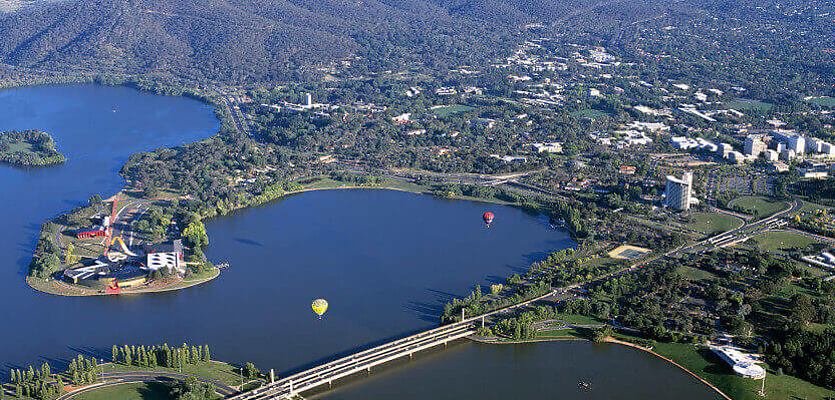Canberra, Hobart and Darwin have led the way for highest annual price growth in Australia, new international research has revealed.
With the average annual price growth now at 7.4 per cent, urban house prices across the world are rising at their fastest rate since 2007, according to Knight Frank’s latest Global Residential Cities Index.
Of the 150 international cities analysed, 43 recorded price growth above 10 per cent over the year to Q1 2021, and that included Australia’s own Canberra, Hobart and Darwin.
Canberra stood out as the fastest-growing Australian city and the country’s only city in the top 20 — occupying the 17th spot — having recorded an annual growth rate of 15.7 per cent.
During the previous quarter, the capital city ranked a much lower 56th, with its growth rate at just 6.6 per cent.
Hobart followed in the 23rd spot, with an annual growth rate of 13.8 per cent, while Darwin managed to slot into the top 50, too, at number 41, with strong growth of 10.8 per cent.
Adelaide wasn’t far behind, in the 44th place, albeit with a single-digit percentage of growth of 9.8 per cent.
Perth nabbed spot number 51 with its own growth rate of 8.9 per cent.
It means “Australia’s five least populated capital cities led the residential price growth over the past year, and all trended above the elevated average annual price growth across the 150 global cities”, as highlighted by Knight Frank’s head of residential research, Michelle Ciesielski.
“The increase in sales transactions demonstrates the commitment in the migration of people moving towards these smaller cities and regional areas, and many first home buyers have been in a better position to buy given the relative value compared to where they were previously living,” she said.
As well as seeing more buyers, these smaller cities have also welcomed more renters, with vacancy rates falling from an average 2.4 per cent at the start of the pandemic to a much lower 1.2 per cent.
“In these markets, we estimate the balance between supply and demand to be around 3 per cent, so there is already a significant shortage of stock, with very little planned to be built in these cities in the coming years,” the researcher said.
Sydney still managed a tidy value boost of 8.6 per cent, making it the 55th-ranked city in the index.
Despite posting lower growth, Melbourne (6.4 per cent) and Brisbane (5 per cent) still ranked in the top 90 at 70 and 89, respectively.
All Australian cities on Knight Frank’s most recent Global Residential Cities Index ranked higher compared to Q4 2020.
Other international cities in the top 20 included Izmir, Ankara and Istanbul in Turkey; Wellington and Auckland in New Zealand; Seoul in Korea; Halifax, Hamilton, Ottawa Gatineau and Montreal in Canada; Moscow and St Petersburg in Russia; Phoenix, San Diego, Seattle and Boston in the United States; Luxembourg in Luxembourg; Bratislava in Slovakia; and Stockholm in Sweden.







You are not authorised to post comments.
Comments will undergo moderation before they get published.